Related Research Articles
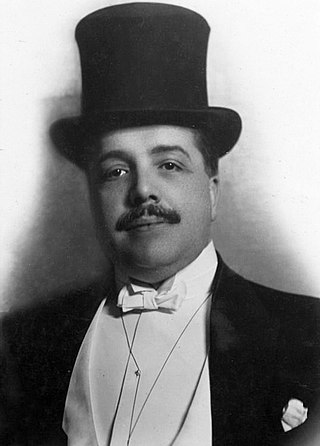
Sergei Pavlovich Diaghilev, also known as Serge Diaghilev, was a Russian art critic, patron, ballet impresario and founder of the Ballets Russes, from which many famous dancers and choreographers would arise.

VaslavNijinsky was a Russian ballet dancer and choreographer of Polish ancestry. He is regarded as the greatest male dancer of the early 20th century. He was celebrated for his virtuosity and for the depth and intensity of his characterizations. He could dance en pointe, a rare skill among male dancers at the time, and was admired for his seemingly gravity-defying leaps.
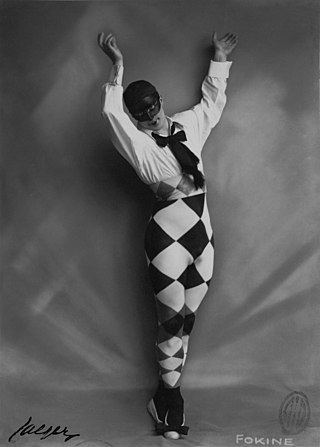
Michael Fokine was a groundbreaking Imperial Russian choreographer and dancer.

Léon Bakst – born as Leyb-Khaim IzrailevichRosenberg, Лейб-Хаим Израилевич (Самойлович) Розенберг was a Russian painter and scene and costume designer of Jewish origin. He was a member of the Sergei Diaghilev circle and the Ballets Russes, for which he designed exotic, richly coloured sets and costumes. He designed the décor for such productions as Carnaval (1910), Spectre de la rose (1911), Daphnis and Chloe (1912), The Sleeping Princess (1921) and others.
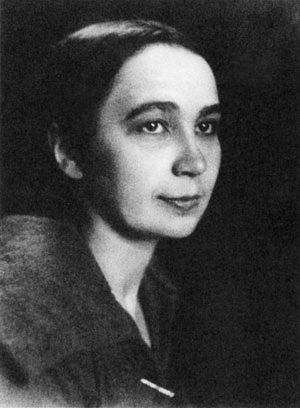
Natalia Sergeevna Goncharova was a Russian avant-garde artist, painter, costume designer, writer, illustrator, and set designer. Goncharova's lifelong partner was fellow Russian avant-garde artist Mikhail Larionov. She was a founding member of both the Jack of Diamonds (1909–1911), Moscow's first radical independent exhibiting group, the more radical Donkey's Tail (1912–1913), and with Larionov invented Rayonism (1912–1914). She was also a member of the German-based art movement Der Blaue Reiter. Born in Russia, she moved to Paris in 1921 and lived there until her death.


Alexandre or Alexander Nikolayevich Benois was a Russian artist, art critic, historian, preservationist and founding member of Mir iskusstva, an art movement and magazine. As a designer for the Ballets Russes under Sergei Diaghilev, Benois exerted what is considered a seminal influence on the modern ballet and stage design.

The Ballets Russes was an itinerant ballet company begun in Paris that performed between 1909 and 1929 throughout Europe and on tours to North and South America. The company never performed in Russia, where the Revolution disrupted society. After its initial Paris season, the company had no formal ties there.

Léopold Frédéric Léopoldowitsch Survage was a Russian-French painter of Finnish origin. Trained in Moscow, he identified with the Russian avant-garde before moving to Paris, where he shared a studio with Amedeo Modigliani and experimented with abstract movies. He also gained commissions for Serge Diaghilev's Ballets Russes.
(Christopher) Richard Sandford Buckle CBE, was a lifelong English devotee of ballet, and a well-known ballet critic. He founded the magazine Ballet in 1939.
The Original Ballet Russe was a ballet company established in 1931 by René Blum and Colonel Wassily de Basil as a successor to the Ballets Russes, founded in 1909 by Sergei Diaghilev. The company assumed the new name Original Ballet Russe after a split between de Basil and Blum. De Basil led the renamed company, while Blum and others founded a new company under the name Ballet Russe de Monte-Carlo. It was a large scale professional ballet company which toured extensively in Europe, Australia and New Zealand, the United States, and Central and South America. It closed down operations in 1947.
Georgy Shishkin is a Russian painter.

Russian Ballet is an artist's book by the English artist David Bomberg published in 1919. The work describes the impact of seeing a performance of Diaghilev's Ballets Russes, and is based on a series of drawings Bomberg had done around 1914, while associated with the Vorticist group of avant-garde artists in London. Centred on Wyndham Lewis and Ezra Pound, the movement flourished briefly from 1914–1915, before being dispersed by the impact of the First World War. The only surviving example of a vorticist artist's book, the work can be seen as a parody of Marinetti's seminal futurist book Zang Tumb Tumb, using similar language to the Italian's work glorifying war, but instead praising the impact of watching the decidedly less macho Ballets Russes in full flow.
Bomberg was the most audacious painter of his generation at the Slade, proving ... that he could absorb the most experimental European ideas, fuse these with Jewish influences and come up with a robust alternative of his own. His treatment of the human figure, in terms of angular, clear-cut forms charged with enormous energy, reveals his determination to bring about a drastic renewal in British painting. —Richard Cork
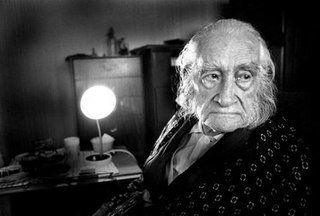
Emil Otto Hoppé was a German-born British portrait, travel, and topographic photographer active between 1907 and 1945. Born to a wealthy family in Munich, he moved to London in 1900 to train as a financier, but took up photography and rapidly achieved great success.
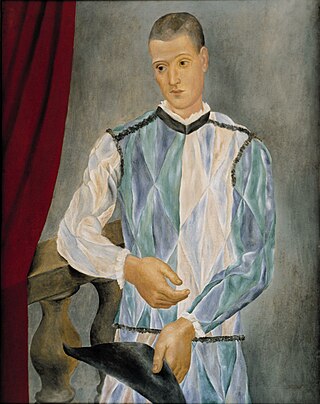
Pablo Picasso and the Ballets Russes collaborated on several productions. Pablo Picasso's Cubist sets and costumes were used by Sergei Diaghilev in the Ballets Russes's Parade, Le Tricorne, Pulcinella, and Cuadro Flamenco. Picasso also drew a sketch with pen on paper of La Boutique fantasque, and designed the drop curtain for Le Train Bleu, based on his painting Two Women Running on the Beach, 1922.
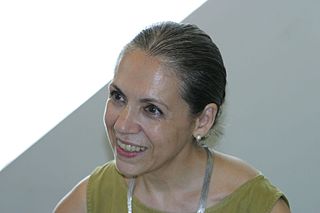
Lynn Theresa Garafola is an American dance historian, linguist, critic, curator, lecturer, and educator. A prominent researcher and writer with broad interests in the field of dance history, she is acknowledged as the leading expert on the Ballets Russes de Serge Diaghilev (1909–1929), the most influential company in twentieth-century theatrical dance.

Gordon Anthony was a British photographer, known particularly for his photographs of ballet and theatre in Britain.
Elizabeth Aldrich is an American dance historian, choreographer, writer, lecturer, consultant, administrator, curator, and archivist. She is internationally known for her research, performance, choreography, teaching, and lectures on Renaissance and Baroque court dance, nineteenth-century social dance, and twentieth-century ragtime dance.
Elizabeth Violet Polunin was a British artist and theatre designer, most notably for her work with Sergei Diaghilev and the Ballets Russes.

David Bowie Is was a touring museum exhibit displaying history, artifacts and information about the life, music, films, tours, and art of English singer-songwriter and actor David Bowie.
References
- ↑ Contributor profile, The Guardian , retrieved 25 August 2013.
- ↑ "Geoffrey Marsh – Art Agency, Partners" . Retrieved 31 December 2018.
- ↑ Geoffrey Marsh, 'Serge Diaghilev and the Strange Birth of the Ballets Russes', in Jane Pritchard (ed.) Diaghilev and the Golden Age of the Ballets Russes 1909–1929 (V&A Publishing 2010)
- ↑ David Bowie is: About the Exhibition, Victoria and Albert Museum, retrieved 25 August 2013.
- ↑ James Lachno and PA (20 March 2013), "V&A curator hopeful David Bowie will attend exhibition", The Daily Telegraph .
- ↑ Sulcas, Roslyn (22 March 2013), "Ch-Ch-Ch Changes of David Bowie", New York Times .
- ↑ "Preview: David Bowie Is on cinema screens as finale to exhibition", The Star, 12 August 2013
- ↑ "Edinburgh University Press Books – Book Living With Shakespeare". edinburghuniversitypress.com. Retrieved 18 February 2021.